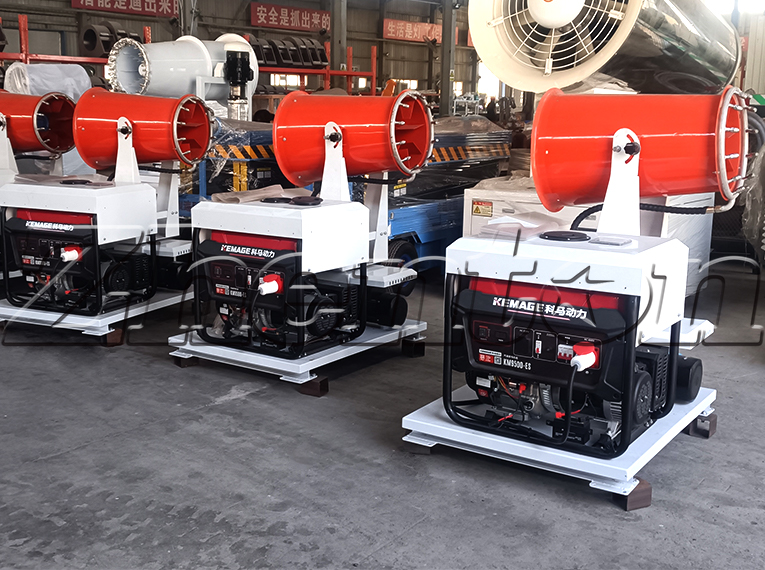Guided by the "dual carbon" goals of carbon peaking and carbon neutrality, various environmental protection equipment has been innovating. The fog cannon, a tried-and-true dust suppression device, is now emerging as a crucial asset in the carbon reduction movement. Amid the intensifying global competition in carbon emission management, the United States is pushing forward unilateral policies like the Foreign Pollution Fee Act, using carbon emissions as a lever for trade access. In contrast, China adheres to the principle of "common but differentiated responsibilities," proactively addressing green trade barriers with concrete actions. Leveraging high-pressure atomization technology, the fog cannon safeguards air quality and contributes significantly to implicit carbon reduction, breathing new life into industrial production and urban governance with its eco-friendly capabilities.
The core logic of the fog cannon's carbon reduction lies in "dust suppression equals carbon reduction". Dust generated in industrial production and construction not only pollutes the air but also indirectly increases carbon emissions. Traditional dust suppression mostly relies on water sprinklers for extensive watering, which wastes a large amount of water resources, and additional energy is required for subsequent sewage treatment. In contrast, the fog cannon atomizes water into micron-sized particles through a high-pressure pump, accurately covering the source of dust. It can not only quickly settle dust but also save more than 80% of water resources. The efficient use of water resources reduces energy consumption in sewage treatment and water extraction, thereby cutting down indirect carbon emissions. At the same time, the effective control of dust avoids extra energy consumption caused by air pollution treatment, forming a positive cycle of "dust suppression - water conservation - carbon reduction".
In industrial scenarios, the fog cannon has become a "capable assistant" for enterprises in carbon reduction. Industries such as iron and steel and cement are key areas under the carbon tariff control of Europe and the United States. In the past, these heavily polluting sites required significant energy input for exhaust gas treatment due to dust problems. Nowadays, fixed fog cannons can accurately cover production workshops and raw material yards, while mobile fog cannons move flexibly on factory roads for 24-hour continuous dust suppression. After a mining enterprise introduced fog cannons, the concentration of dust emissions dropped by 70%, and the annual indirect carbon emissions were reduced by more than 500 tons due to water conservation and reduced energy consumption for pollution treatment. This not only achieves a win-win situation for environmental protection and economic benefits but also provides a practical path for addressing cross-border carbon cost accounting.

In urban governance, the fog cannon is also a "light cavalry" for carbon reduction. In scenarios such as road cleaning, demolition sites, and garbage landfills, regular operation of vehicle-mounted and tower-type fog cannons effectively curbs urban dust. Compared with traditional water sprinklers, the atomized water from fog cannons combines with dust more easily, increasing dust suppression efficiency by more than 3 times, and avoiding increased traffic energy consumption caused by road water accumulation. During hot summer days, fog cannons can also improve the urban microclimate by cooling and humidifying, reducing carbon emissions from air conditioning use, and serving as a multi-functional equipment for urban green transformation.

From industrial zones to city roads, the fog cannon—modest in size yet mighty in function—drives carbon reduction with innovative technology. In the escalating U.S.-China rivalry over green tech and trade norms, promoting such practical carbon-cutting solutions benefits businesses by shrinking their carbon footprint and shielding them from carbon tariff risks. It also underscores China’s active role in global climate action. Through IoT-enabled upgrades, smart fog cannons now enable precision dust suppression and demand-based operation, slashing energy waste. As China progresses towards its "dual carbon" goals, the fog cannon emerges as a key player in preserving clear skies and fueling sustainable growth.











